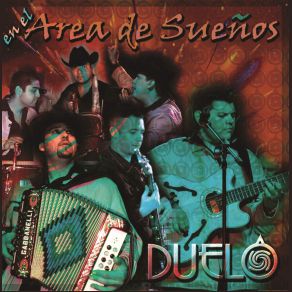En el Area de Sueños / En el Area de Suenos
Download links and information about En el Area de Sueños / En el Area de Suenos by Duelo. This album was released in 2005 and it belongs to Latin genres. It contains 10 tracks with total duration of 30:24 minutes.

|
|
|---|---|
| Artist: | Duelo |
| Release date: | 2005 |
| Genre: | Latin |
| Tracks: | 10 |
| Duration: | 30:24 |
| Buy it NOW at: | |
| Buy on iTunes $9.99 | |
| Buy on Amazon $9.49 | |
Tracks
[Edit]| No. | Title | Length |
|---|---|---|
| 1. | El Dia | 3:07 |
| 2. | Quien Escribio Nuestra Historia | 2:47 |
| 3. | Tu Silueta | 3:05 |
| 4. | Rezo | 3:33 |
| 5. | Le Dije Al Corazon | 2:33 |
| 6. | Vuelvo a Caer | 3:09 |
| 7. | Miradas | 2:53 |
| 8. | Solo Callas | 3:23 |
| 9. | No Es Justo | 3:20 |
| 10. | Ya Me Voy | 2:34 |
Details
[Edit]Duelo have turned out to be one of the more fresh-sounding norteño/Tex-Mex groups of the 2000s. They don't play the really hardcore norteño associated with Los Tigres del Norte, Los Rieleros del Norte, Los Tucanes de Tijuana, Los Huracanes del Norte, and Oro Norteño, but at the same time, Duelo don't have the sleekness and glossiness one associates with grupero (which is essentially Latin pop with norteño and cumbia Mexicana overtones). En el Area de Sueños is clearly a softer, more relaxed and laid-back effort than one would expect from Los Tigres or Los Huracanes, but it has an earthier, more organic quality than many of the recordings by groups that go for the norteño light approach — and Duelo's willingness to do things their own way is a definite plus on introspective items like "Vuelvo a Caer," "Rezo," and "Quién Escribió Nuestra Historia," all of which were written or co-written by lead singer/bassist Oscar Iván Treviño (who was only 22 when this 30-minute CD came out in May 2005). Treviño, in fact, wrote or co-wrote everything on the album; he's obviously a prolific songwriter, and Treviño is also someone who has mastered the art of subtlety. En el Area de Sueños is not the sort of album that shouts to get one's attention; nonetheless, Treviño gets his emotional points across — and quite often, he is expressing melancholia, which is not uncommon in regional Mexican music. From mariachi to norteño to duranguense, a good many Mexican songs have been on the melancholy side. But Treviño and his colleagues are embracing norteño on their own terms, and their individualism serves them well on En el Area de Sueños.